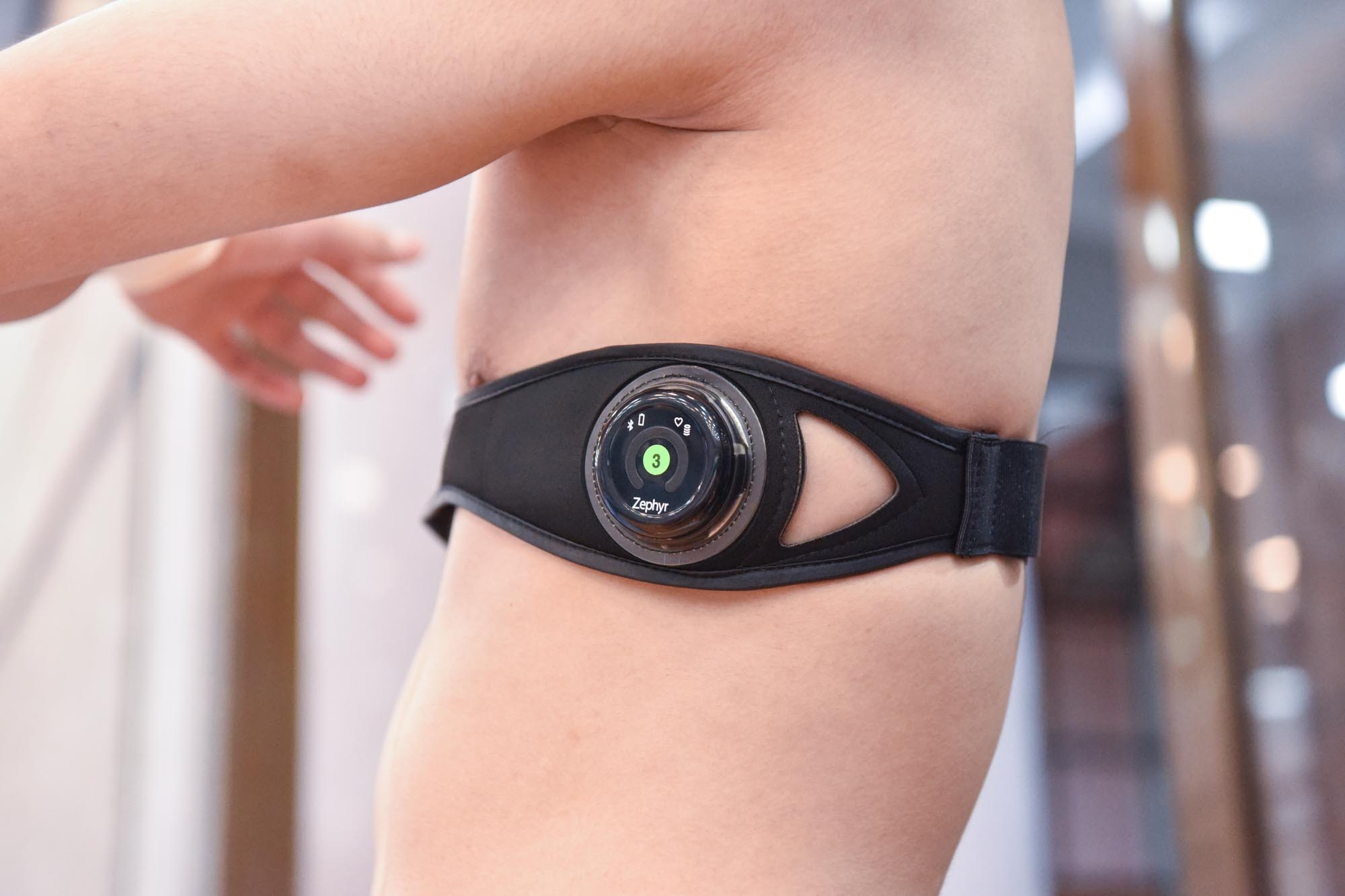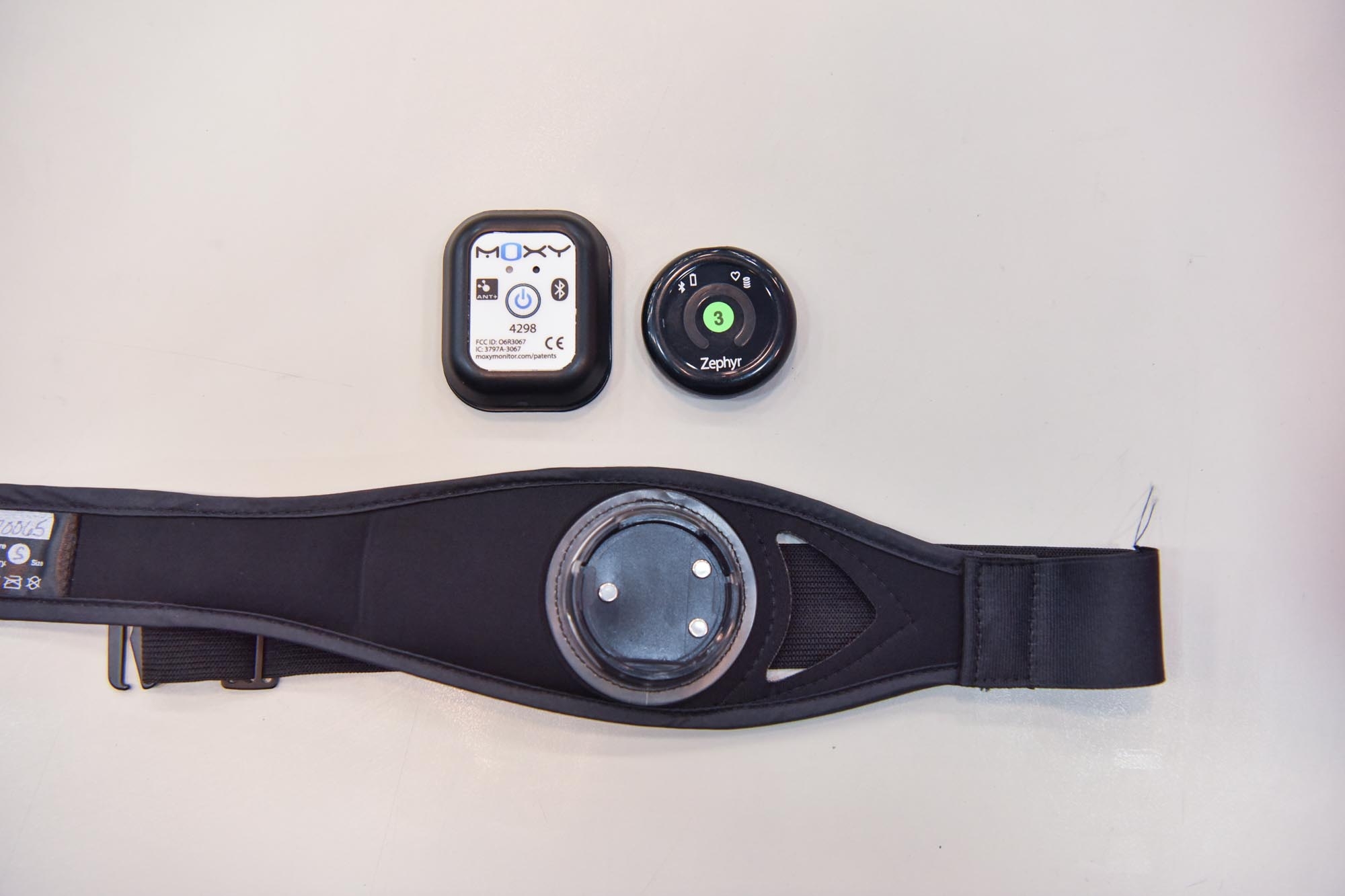ORIGINAL ARTICLE:本校公共事務中心 (2023-04-14)
To cultivate world-class artistic gymnasts, Professor Cheng Ching-Feng from the Department of Physical Education and Sport Sciences at NTNU has teamed up with Professor Lin Yuan-Hsiang from the Department of Electronic Engineering at National Taiwan University of Science and Technology, Associate Professor Lee Heng-Ju from NTNU’s Department of Physical Education and Sport Sciences, and Assistant Professor Weng Shih-Hang from the Department of Athletic Performance. Together, they are undertaking a four-year research project funded by Taiwan’s National Science and Technology Council (NSTC), titled the “Phase II Precision Sports Science Research Program.” On April 7, the team presented their project outcomes and future visions at the Gymnastics Hall of NTNU’s Heping Campus, under the theme: “Perfect Flips and Precise Landings: Scientific Gymnastics Training and Monitoring.”
Artistic gymnastics values difficulty, innovation, stability, aesthetics, and power. Gymnasts typically begin training from a young age, accumulating around 1,000 hours of specific training annually for 10 consecutive years to reach elite performance levels. Because of this rigorous training path, NTNU views every gymnast as treasure. Through this NSTC-sponsored project, the university aims to develop measurement instruments and feedback systems that apply scientific training to extend athletes’ peak performance and push beyond their own limits, ultimately enhancing athletic gymnastics performance.
“Using the flywheel training machine helped me identify the takeoff force for my double backflip and improve landing stability,” said Chen Luo-Jhen, team captain of NTNU’s affiliated elementary school gymnastics team. Coach Weng utilizes the flywheel to train athletes’ explosiveness and agility. Athletes strive to hit their personal speed thresholds, enhancing their overall performance. Yu Yi-He from Ying-Qiao junior high school added, “Without the flywheel, it would’ve taken me much more time and effort to find the right exertion point.”
As a former gymnast, Coach Weng understands athletes’ needs and has crafted a scientifically grounded training model tailored to them. The NSTC project currently includes four sub-projects focused on neuromuscular monitoring, data analysis for bar routines, training aids for landing stability, and intelligent training systems—all designed to help gymnasts reach world-class levels.
Neuromuscular Monitoring and Evaluation System for Gymnasts
“Quantification is the foundation of science,” says Professor Cheng. Athletes wear non-invasive devices that use infrared sensors to monitor heart rate, respiration, and muscle oxygen saturation in real time. These metrics help coaches understand athletes’ physiological states and avoid overtraining or discrepancies between perceived and actual physical conditions—minimizing injury risk.
Real-Time Training Aids and Motion Analysis System
“Top athletes need trust—and quantified data strengthens that trust,” notes Professor Lin Yuan-Hsiang. By integrating sensor data from horizontal bars and synchronized video analytics, the system measures the head-to-bar distance and tracks the timing of bar releases and regrips. These insights help optimize athletes’ positioning, angles, and air time during bar routines.
Smart Gymnastics Training and Performance System
“Let data lead the way—help grassroots coaches and athletes build training programs,” says Assistant Professor Weng. Using IMUs (Inertial Measurement Units), which record three-axis angular velocity and acceleration, the team can gather precise data on athletes’ limb rotations during bar routines. This helps identify potentially harmful patterns where an athlete’s perception diverges from their actual performance, thus preventing injuries. The team is also developing a mobile-accessible smart gymnastics system, bringing performance data into grassroots training environments.
Landing Stability Analysis
“We use mathematical formulas to quantify landing stability, ensuring precise landings for every gymnast,” explains Associate Professor Lee Heng-Ju. Using a 60-kilogram force plate, the system measures ground reaction forces upon landing and calculates the “Time to Stability” (TTS). This gives clear numerical targets for gymnasts to strive for perfect landings during competitions.
By replacing intuition and coaching experience with visible, data-driven feedback, this scientific approach enables athletes and coaches to design more effective training regimens. Ultimately, it helps gymnasts consistently break through their limits and compete for national glory with the backing of science.
Written by: Campus Reporter Lin Tzu-Chun, MA in Chinese / Edited by: Chang Shih / Proofread by: Hu Shih-Tse (English Version Powered by ChatGPT, Edited by Serena H.)
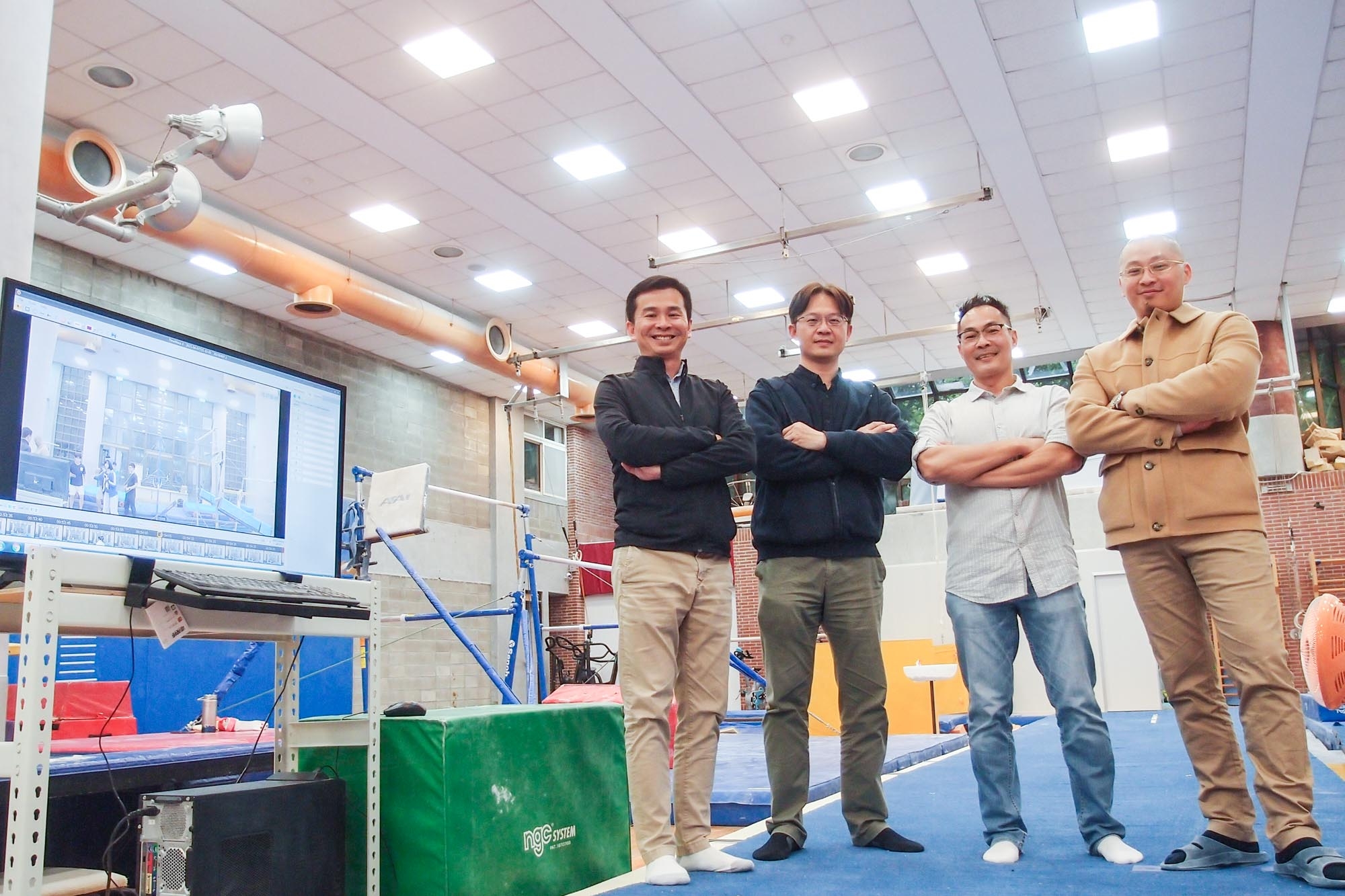
由左至右為體育與運動科學系李恆儒副教授、臺灣科技大學電子工程系林淵翔教授、臺師大運動競技學系鄭景峰教授、運動競技學系翁士航助理教授。
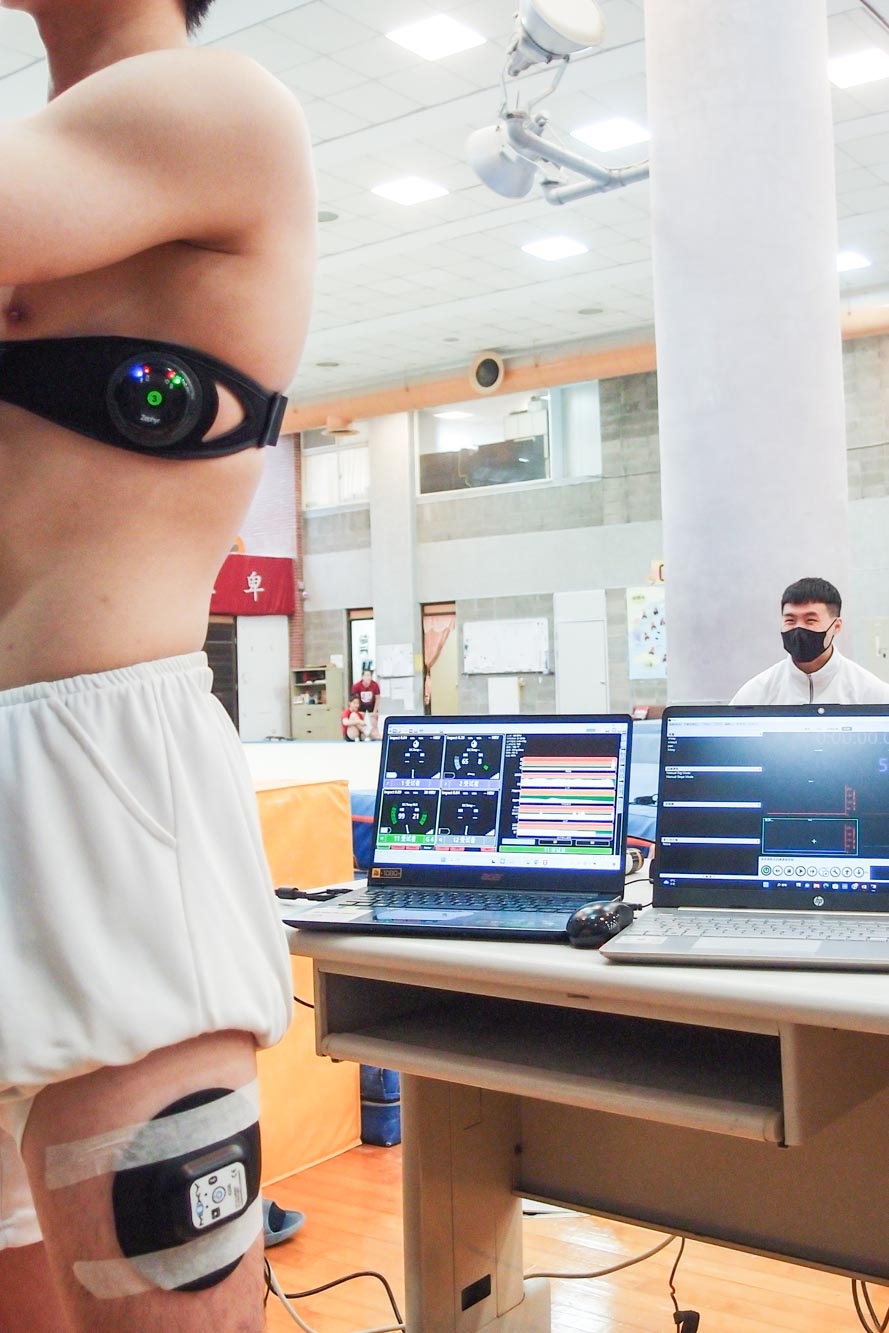
選手穿戴非侵入式感測儀器,直接連線電腦數據。
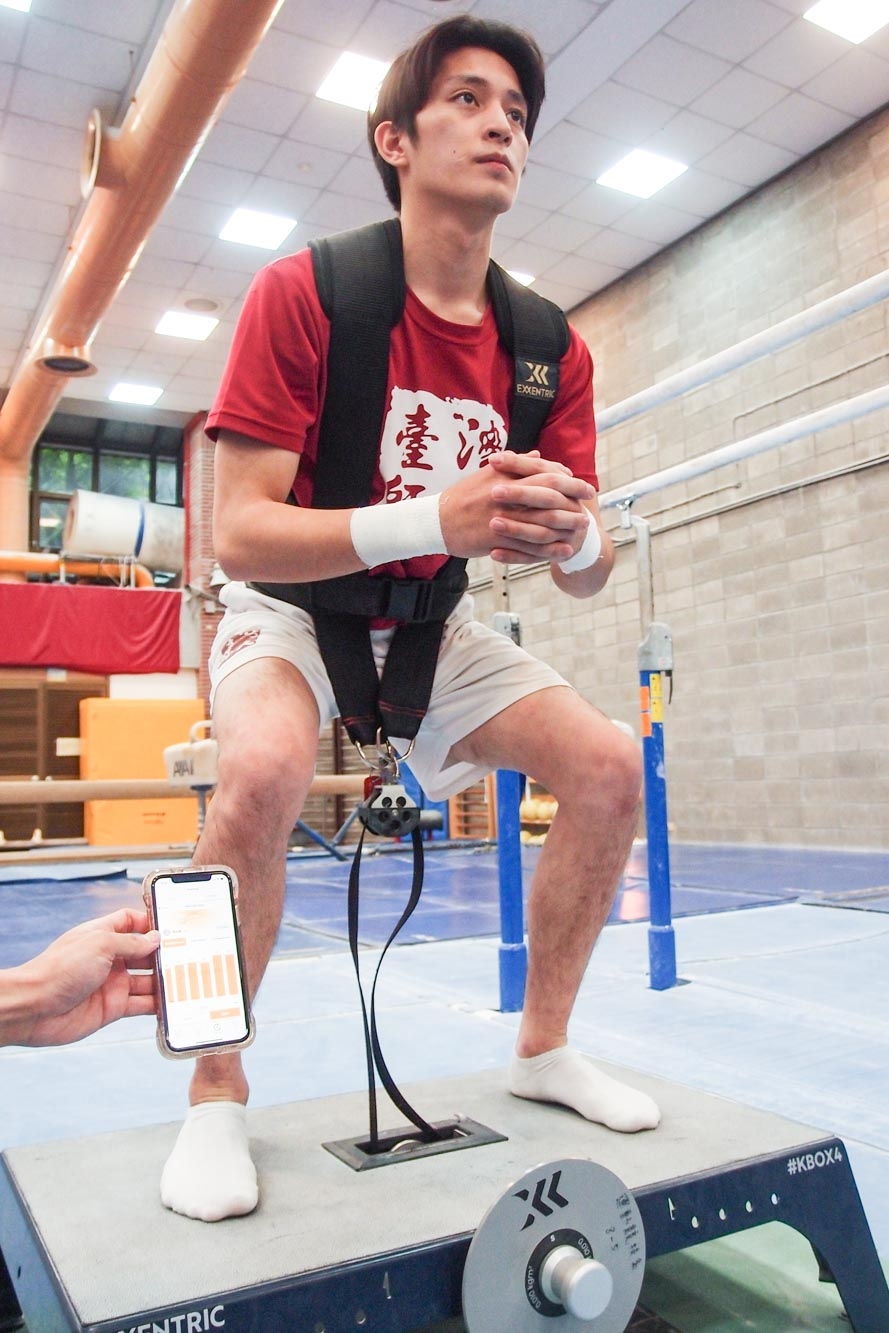
離心機結合感測器,讓數據更加完整,手機也能帶走數據。
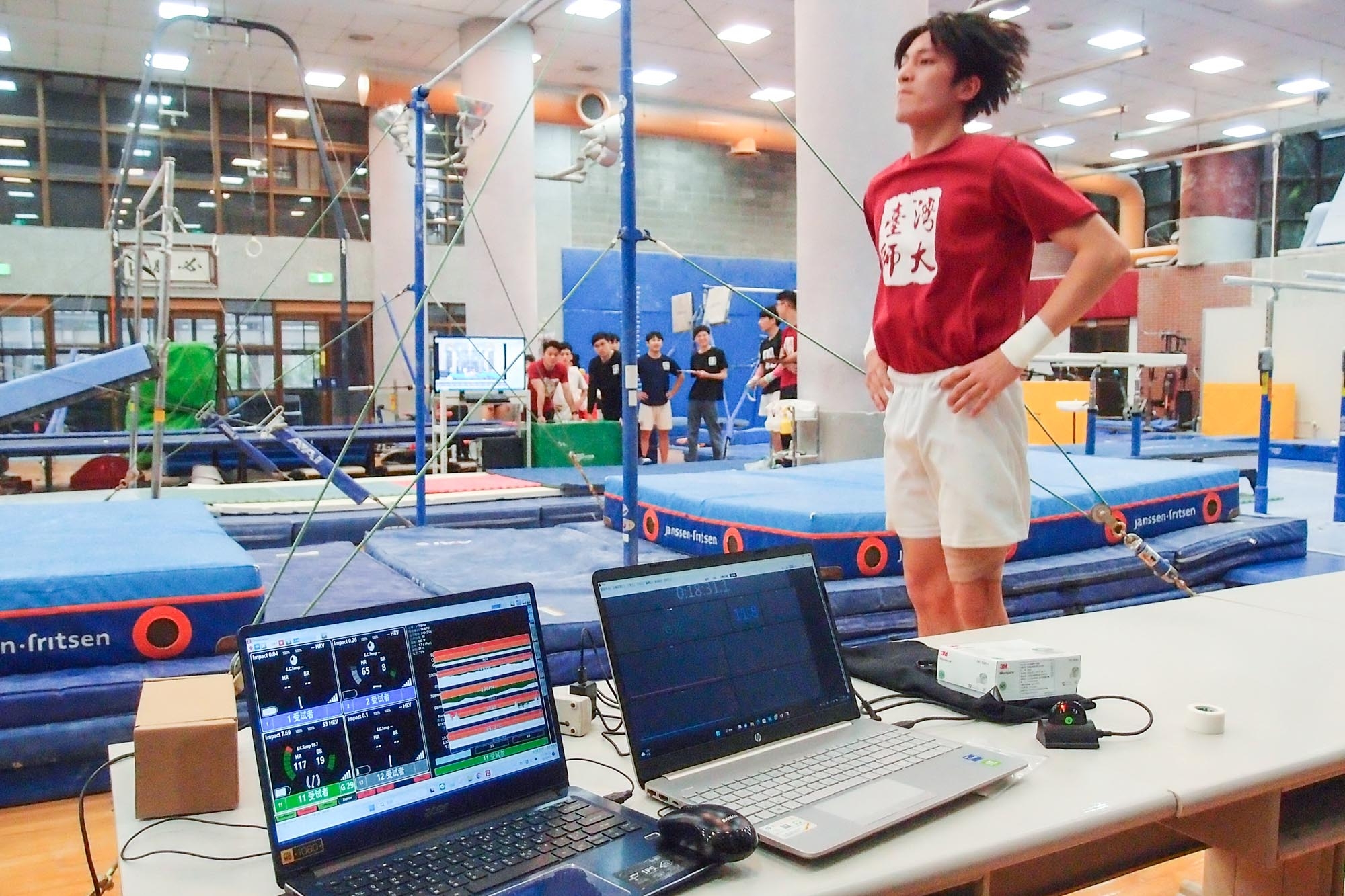
儀器即時傳輸選手的心跳呼吸及肌肉血氧。
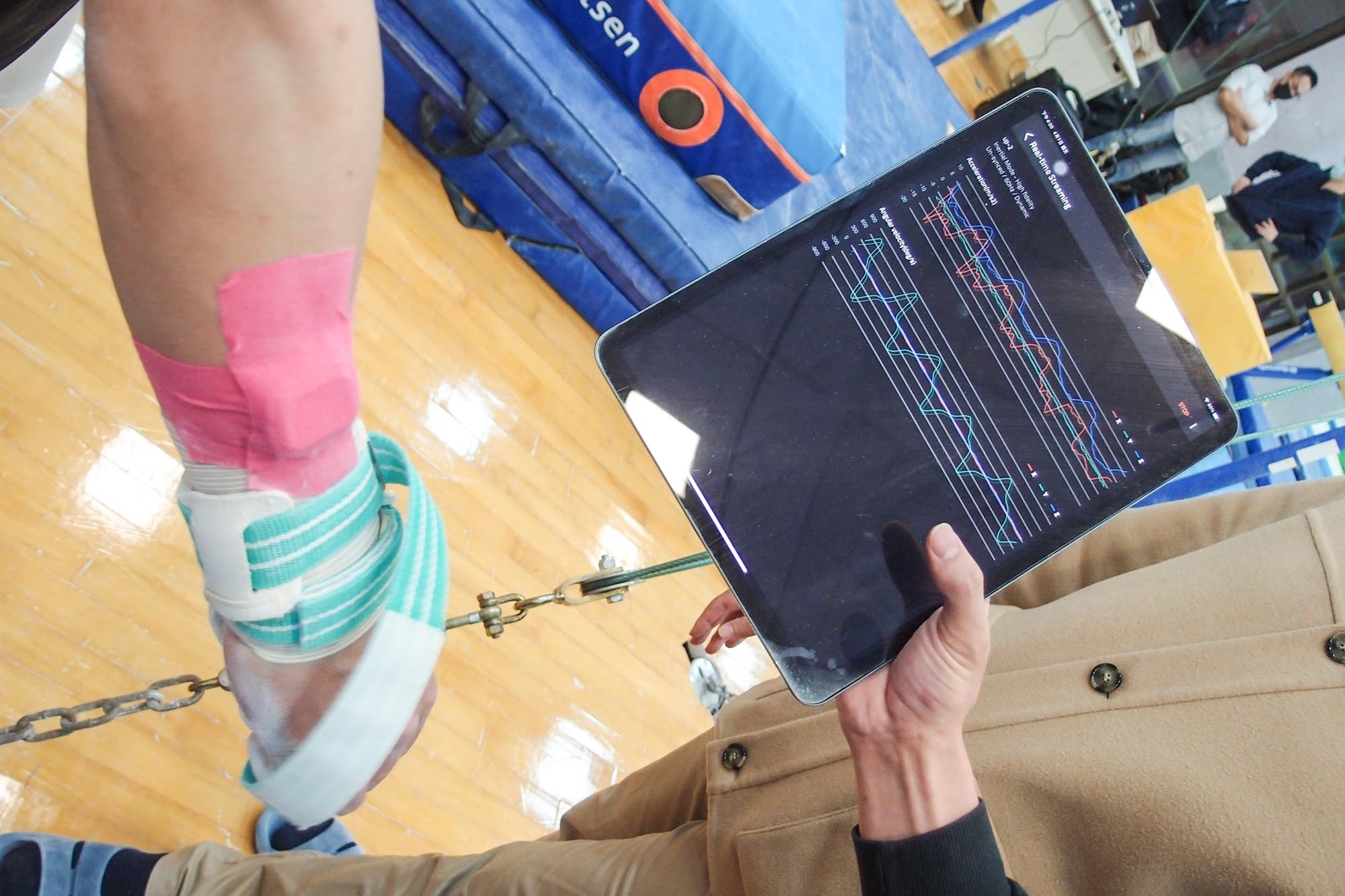
穿戴式儀器產出數據。
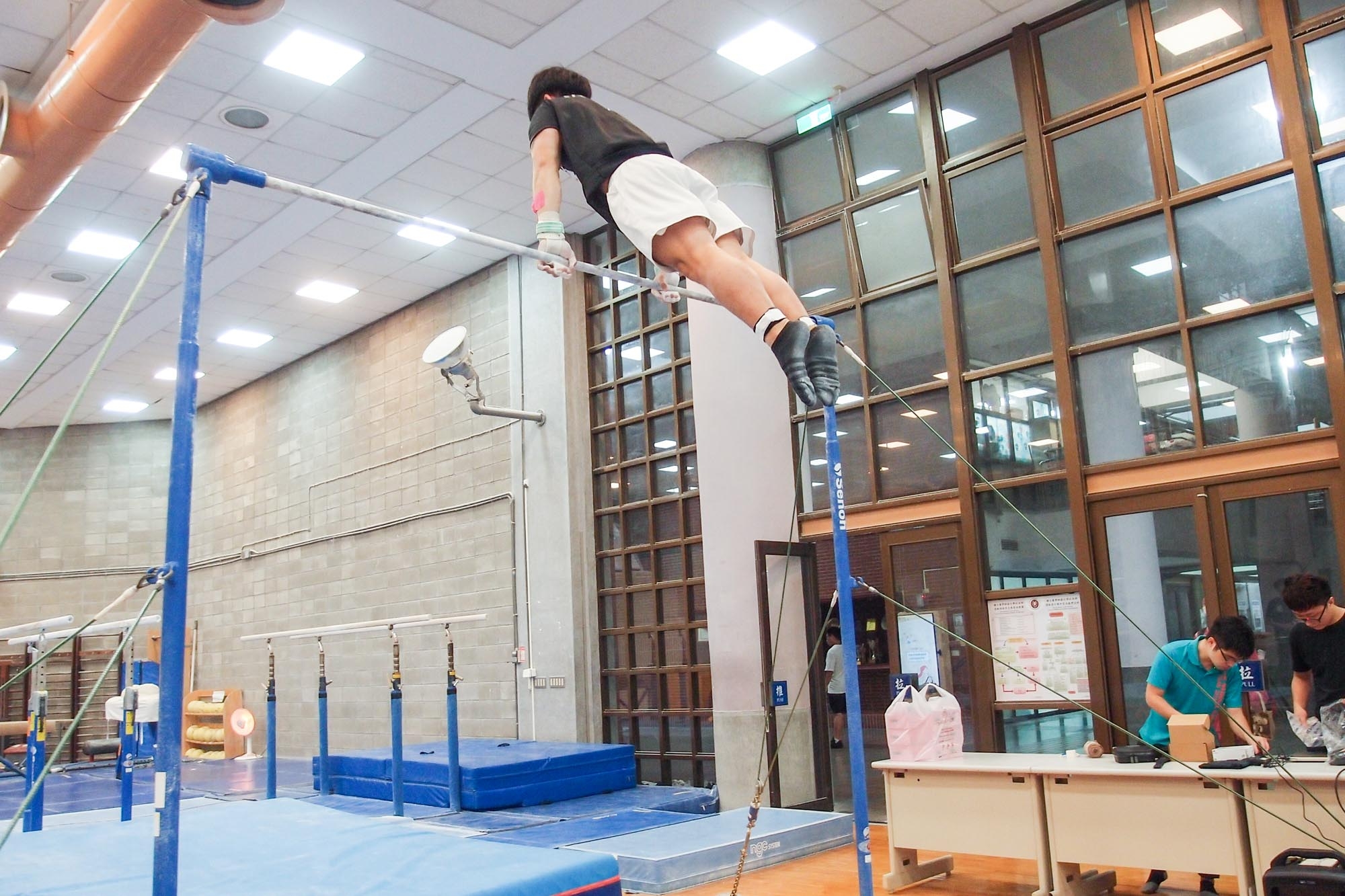
選手精確執行最佳上槓角度。
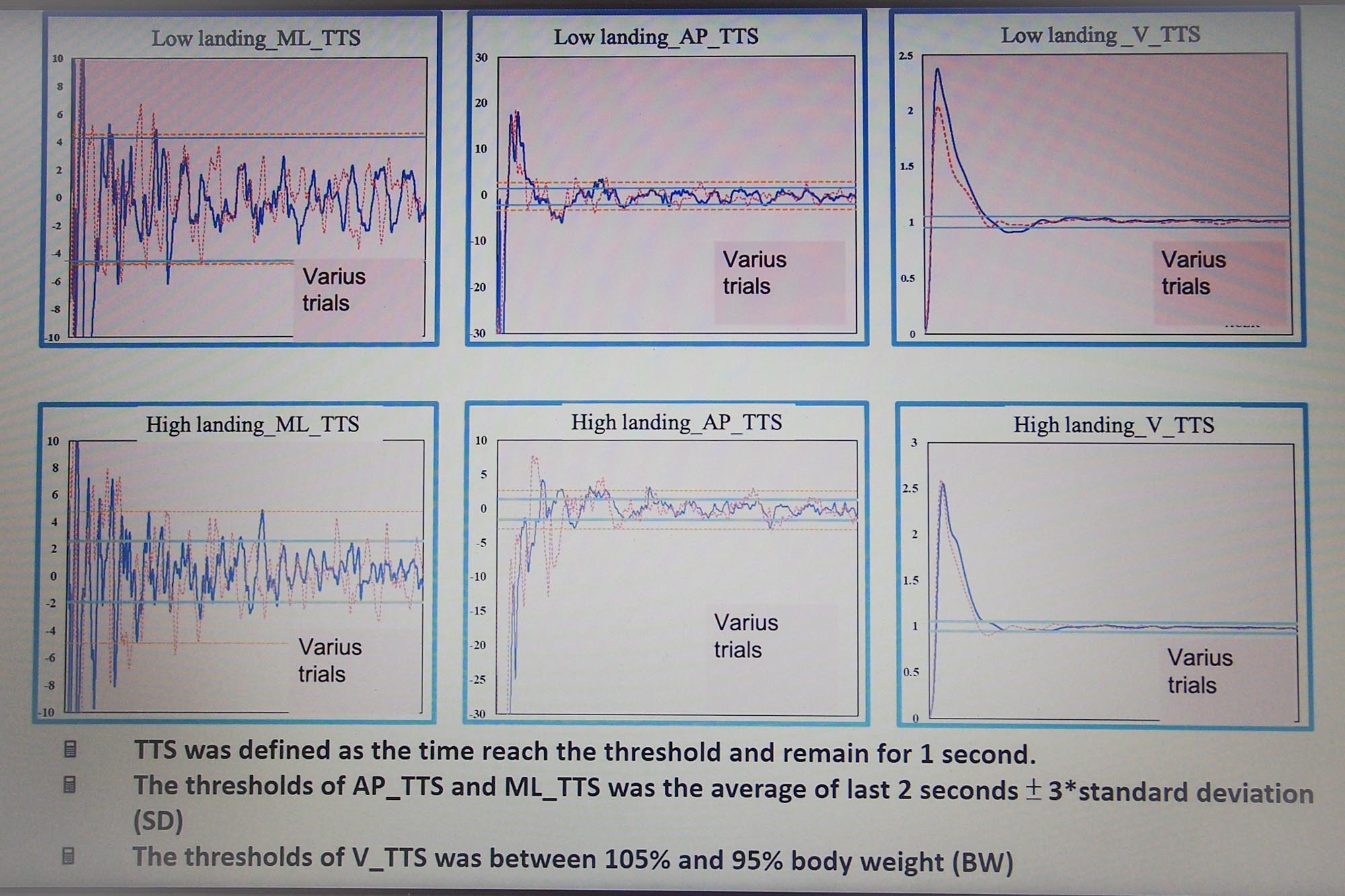
精準偵測選手落地時穩定的時間(Time To Stability)。
